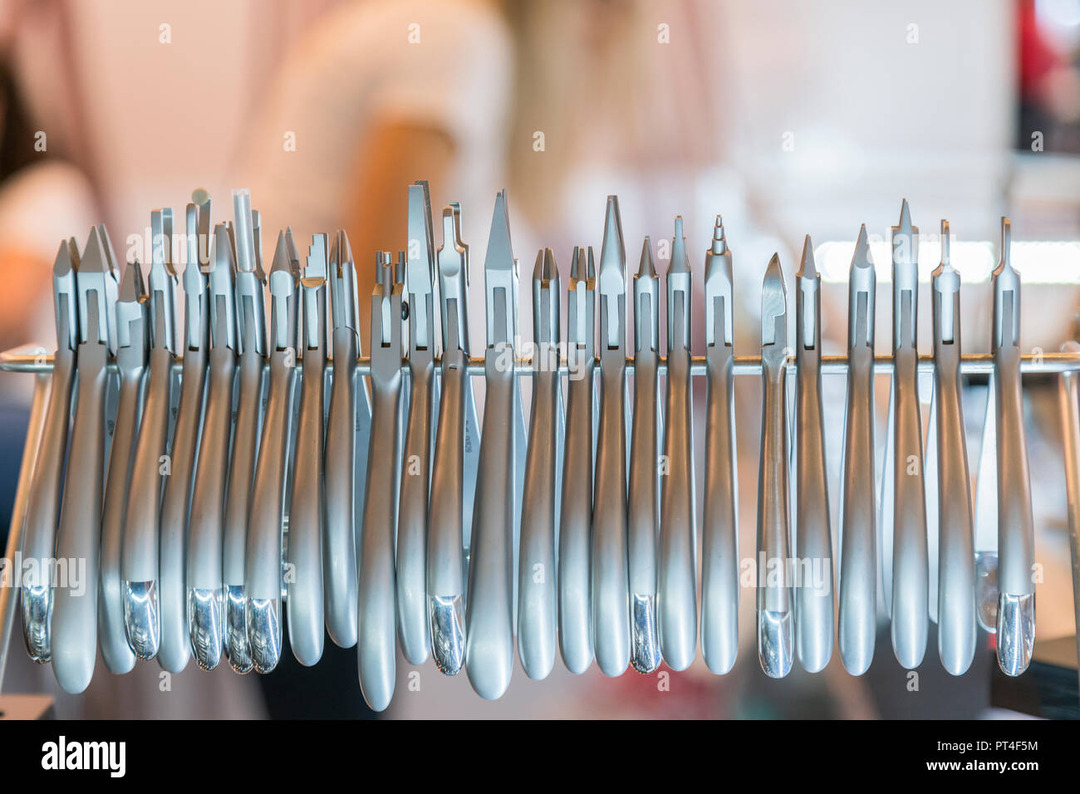Dental extraction forceps are essential tools used in dentistry for the removal of teeth. Whether it’s a simple extraction or a more complex procedure, having the right forceps can make all the difference. In this comprehensive beginner’s guide, we’ll delve into the types of dental extraction forceps, how to choose the right one, proper usage techniques, common mistakes to avoid, and tips for beginners.

I. Introduction
Definition of Dental Extraction Forceps
Dental extraction forceps are instruments specifically designed for gripping and removing teeth from the alveolar bone during dental extractions. They come in various shapes and sizes, each suited for different types of teeth and extraction scenarios.
Importance of Dental Extraction Forceps
These forceps play a crucial role in dental procedures by providing the necessary leverage and control to safely and effectively remove teeth while minimizing trauma to surrounding tissues.
II. Types of Dental Extraction Forceps
Universal Forceps
Universal forceps, as the name suggests, are versatile instruments designed to handle a wide range of tooth types and extraction situations. They are commonly used for the extraction of anterior and premolar teeth.
Maxillary Forceps
Maxillary forceps are specifically designed for extracting teeth from the upper jaw (maxilla). They come in various shapes and sizes to accommodate the different anatomical features of the maxillary teeth.
Mandibular Forceps
Mandibular forceps are designed for extracting teeth from the lower jaw (mandible). Like maxillary forceps, they are available in different designs to accommodate the unique features of mandibular teeth.

III. Choosing the Right Dental Extraction Forceps
Considerations for Selection
When choosing dental extraction forceps, several factors need to be considered, including the tooth’s location, size, shape, and root morphology. Additionally, the patient’s medical history and the presence of any complicating factors should also be taken into account.
Factors Affecting Choice
Other factors that may influence the choice of forceps include the dentist’s level of experience, the patient’s comfort, and the specific requirements of the extraction procedure.
IV. How to Use Dental Extraction Forceps
Pre-extraction Preparation
Before performing an extraction, it’s essential to conduct a thorough examination of the patient’s oral cavity, including taking X-rays to assess the tooth’s position and root structure. Adequate anesthesia should also be administered to ensure the patient’s comfort during the procedure.
Extraction Procedure
Once the tooth and surrounding tissues are adequately numbed, the extraction procedure can begin. The dentist will use the selected forceps to grasp the tooth firmly and apply controlled pressure to loosen it from the socket. Once the tooth is sufficiently mobilized, it can be gently removed using rotational or tractional movements.

Post-extraction Care
After the tooth has been extracted, it’s essential to provide the patient with post-operative instructions for optimal healing. This may include prescribing pain medication, providing instructions for proper oral hygiene, and scheduling follow-up appointments to monitor healing progress.
V. Common Mistakes to Avoid
Incorrect Forceps Selection
Using the wrong type of forceps for a particular tooth or extraction scenario can increase the risk of complications, such as root fractures or damage to surrounding tissues.
Improper Technique
Poor technique during the extraction procedure can lead to incomplete or traumatic extractions, resulting in prolonged healing times and increased patient discomfort.
Inadequate Post-Extraction Care
Failing to provide proper post-operative care instructions to patients can result in complications such as infection, dry socket, or delayed healing.
VI. Tips for Beginners
Seek Guidance from Experienced Professionals
For beginners, seeking guidance and mentorship from experienced dental professionals can provide valuable insights and tips for improving extraction techniques.
Practice Proper Technique
Like any skill, proficiency in dental extractions comes with practice. It’s essential for beginners to practice proper technique under supervision until they feel confident in their abilities.
Stay Updated on Latest Techniques and Tools
The field of dentistry is constantly evolving, with new techniques and tools being developed regularly. Beginners should make an effort to stay updated on the latest advancements in dental extraction techniques and equipment.
VII. Conclusion
Dental extraction forceps are indispensable tools in dentistry, allowing dentists to safely and effectively remove teeth when necessary. By understanding the different types of forceps, how to choose the right one, and proper extraction techniques, beginners can perform extractions with confidence and minimize the risk of complications.
FAQs (Frequently Asked Questions)
What are dental extraction forceps used for?
Dental extraction forceps are used by dentists to grip and remove teeth from the alveolar bone during dental extractions.
How do I choose the right dental extraction forceps?
The choice of forceps depends on factors such as the tooth’s location, size, shape, and root morphology, as well as the patient’s medical history and the dentist’s level of experience.
Are dental extractions painful?
With proper anesthesia and technique, dental extractions are typically not painful. Patients may experience some discomfort during the procedure, but it is usually well-managed with local anesthesia.
What are some common complications of dental extractions?
Common complications of dental extractions include infection, dry socket, nerve damage, and damage to surrounding teeth or tissues.
How long does it take to recover from a dental extraction?
Recovery time varies depending on the complexity of the extraction and the individual patient’s healing response. In general, most patients recover fully within a few days to a week after the procedure.




